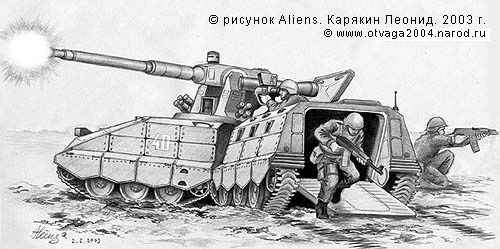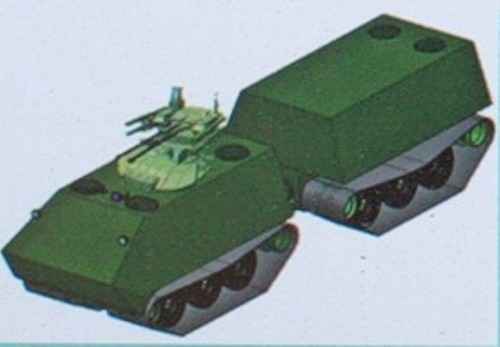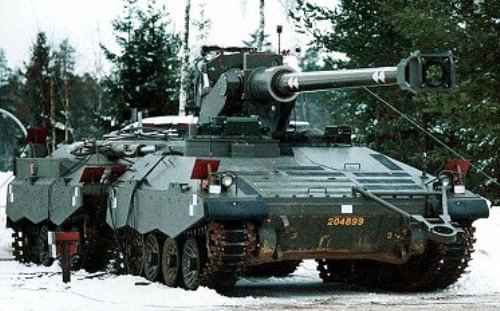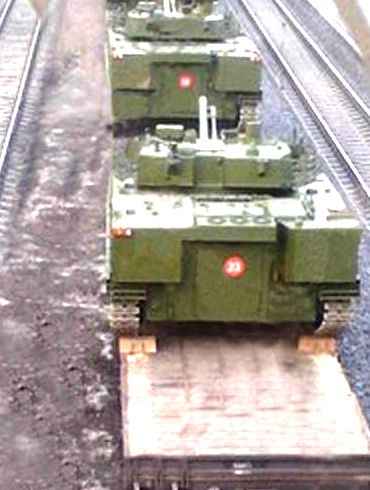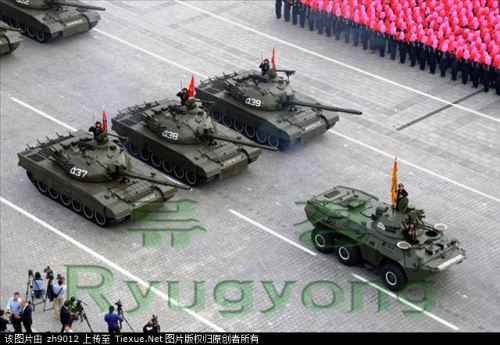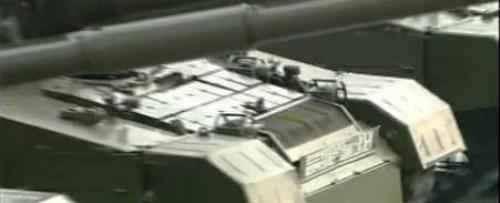Валерий Григорян – президент, директор по науке ОАО «НИИ стали», доктор технических наук, профессор, академик РАРАН
Журнал «Военный парад» № 5 / 2011 год
На сегодняшний день защита даже наиболее современных отечественных танков типа Т-90 против кумулятивных и бронебойных подкалиберных средств (БПС) поражения нуждается в усилении. Из экспертных оценок роста могущества наиболее представительных противотанковых снарядов и ПТУР следует, например, что бронепробивная способность БПС танковых пушек модификаций танка М1 «Абрамс» растёт по приблизительно линейному за-кону с коэффициентом пропорциональности около 35 мм/год. Если говорить о кумулятивных ПТУР, то наряду с ростом бронепробивной способности боевых частей (БЧ) за счёт увеличения калибра, повышения мощности зарядов взрывчатого вещества (ВВ) и применения прецизионных технологий в изготовлении БЧ происходит качественное изменение принципа воздействия на защиту, а именно переход на тандемные БЧ, способные преодолевать динамическую защиту первых поколений, увеличение времени задержки между срабатыванием основной и вспомогательной БЧ, повышение эффективности их действия за счёт различного рода схемных ухищрений и т.д.
Совершенно очевидно, что для сохранения паритета требовался адекватный ответ со стороны защиты отечественных танков. Необходимость срочных ответных шагов в направлении усиления защищённости отечественных танков диктуется также повышением её роли в локальных конфликтах, где резко возрастает вероятность применения против тонкобронных бортовых проекций танка средств ближнего боя, таких как ручной противотанковый гранатомет (РПГ) кумулятивного действия.
Задача по созданию комплекса защиты была поставлена перед специалистами ОАО «НИИ стали». В результате был разработан и принят на вооружение комплекс лобовой защиты «Реликт» и, созданные первоначально для защиты от РПГ легкобронированных машин типа БМП-3 специальные модули ДЗ, обеспечивающие непоражаемость бортовых проекций корпуса и башни танка от распространённых средств ближнего боя типа ПГ-9С.
Кормовая часть корпуса (в районе моторного отсека) и башни прикрыты решетчатыми экранами, снижающими вероятность образования кумулятивной струи из воронки БЧ ПГ более чем наполовину за счёт нарушения штатного функционирования БЧ при попадании между рёбрами решётки.
Оба комплекса являются принципиально новыми. Так, комплекс «Реликт» базируется на элементе динамической защиты (ДЗ) повышенной чувствительности 4С23 и современной, более эффективной схеме метания, в которой преобладает деструктивное и дестабилизирующее влияние на поражающие элементы боеприпасов (кумулятивную струю, сердечник БПС) относительно толстых броневых пластин, метаемых в противоположные стороны. При этом преобладающий вклад в указанное деструктивное воздействие вносит пластина, метаемая «вдогон». Благодаря тому, что энергетически метание «вдогон» выгоднее, чем метание навстречу, на структурах подобного рода реализуются значительные (в 4-5 раз) приросты стойкости по БПС в сравнении с серийным комплексом ДЗ «Контакт-V» и одновременно существенно вырастают «противотандемные» свойства такой брони, т.е. она приобретает стойкость против самых современных тандемных ПТУР типа TOW-2A с временем задержки не менее 400 мкс и бронепробиваемостью за навесной противокумулятивной ДЗ не менее 1000 мм. Таким образом, появление комплекса «Реликт» на отечественных танках – это существенный скачок по защищённости, обеспечивающий защиту от большинства самых современных противотанковых средств горизонтального обстрела, предназначенных для поражения танка со стороны лобовой проекции.
По оценкам специалистов, высказанным в ходе выставки в Нижнем Тагиле, «Реликт», созданный в НИИ стали, является адекватным ответом современным противотанковым средствам поражения. Сегодня это один из самых лучших защитных комплексов для бронетехники, а возможность его установки как на новые, так и модернизируемые и находящиеся в эксплуатации танки делает «Реликт» по-настоящему уникальным.
Обеспечение защищённости бортовых проекций танка от противотанковых кумулятивных гранат было заимствовано из технических решений, отработанных для машин лёгкой категории по массе (ЛКМ). Применительно к защите ЛКМ решение задачи было значительно более трудным в связи с несколькими ограничениями:
-необходимо было организовать процесс инициирования ВВ и разлёта пластин таким образом, чтобы предотвратить их разрушающее воздействие на относительно тонкую основную броню;
- требовалось предотвратить передачу детонации от инициируемого при воздействии кумулятивной струи заряда элемента динамической защиты (ЭДЗ) на весь объем блока;
- по возможности, максимально локализовать площадь поражения, ограничив её площадью одного-двух модулей;
-придать защитным модулям универсальность, имея в виду одновременное усиление защиты по кинетическим средствам поражения, таким как пули калибра до 14,5 мм и снаряды к малокалиберным пушкам.
Весь перечисленный комплекс задач в немалой степени был решён благодаря разработке и постановке на вооружение ЭДЗ инд. 4С24 с вдвое уменьшенным по сравнению с ЭДЗ 4С20, 4С22 количеством ВВ. Это позволило без снижения эффективности струегашения резко повысить конструктивную живучесть при обстреле и практически устранить возгораемость как самих ЭДЗ, так и модулей в целом, что при прежних ЭДЗ типа 4С20 было проблематичным.
Необходимо также особо подчеркнуть, что при отработке данного комплекса удалось решить весьма сложную задачу задержки лидирующей части струи, которая в силу определённой инерционности разлёта пластин ДЗ (особенно, метаемой вдогон) успевала «проскочить», обладая при этом достаточно высокой для относительно тонкой основной брони бронепробивной способностью не менее одного калибра БЧ.
Следует также отметить, что комплекс «Реликт» предполагает установку на танке комплекса средств снижения заметности от высокоточного оружия, главным компонентом которого является комплект противорадиолокационного мультиспектрального композиционного материала «Накидка», широко апробированного и хорошо себя зарекомендовавшего.
Даже простой визуальный осмотр машин показывает, что существенно уменьшен процент так называемых «ослабленных зон».
Если учесть, что представленные защитные комплексы – это лишь часть огромной работы по глубокой модернизации танка Т-90, выполненной «Уралвагонзаводом» по практически всем аспектам повышения боевой эффективности машины, то можно сделать заключение, что как наша армия, так и зарубежные партнёры в случае закупки такой машины получат один из лучших в мире танков, способных противостоять современным угрозам.
При этом потенциал роста как защиты, так и других боевых качеств машины таит в себе ещё немало резервов.
RELIKT COMPLEX IS A RELIABLE PROTECTION
Valery Grogoryan - president, science director for JSC NII STALI (Research Institute of Steel), PhD (technical science), professor, RASRA academician
Military Parade, No. 5, 2011
At present, the armor protection of even most advanced domestic tanks of type T-90 against high explosive antitank (HEAT) and armor-piercing discarding sabot (APDS) projectiles needs improvement. It follows from the expert evaluations of the most representative antitank projectiles and antitank guided missiles (ATGM) that, for example, penetration ability of the APDS of the tank guns of the ABRAMS M1 tank modifications is growing approximately according to the linear law with a factor of proportionality of about 35 mm per year. As regards the HEAT guided missiles, then alongside with the growth of the penetration ability of the warheads (WH) due to the increase in caliber, power of explosive charges and use of the precision technologies for manufacture of the warheads, a qualitative change in the principle of influence on the armor protection takes place. Specifically, we can see a transfer to the tandem warheads capable of destroying the reactive armor of the first generations, expansion of the delay time between operation of the main and auxiliary warheads, improvement of their effectiveness thanks to the scheme contrivances of different kinds, etc.
It is quite obvious that to maintain parity, we should find an adequate answer to improve for the armor protection of the domestic tanks.
The necessity of the urgent retaliatory steps to improve armor protection of the domestic tanks is also dictated by its higher role in the local conflicts where probability of use of the close combat weapons such as a handheld grenade launcher (RPG) with the HEAT grenades against the thin-armored side projections of the tank abruptly increases.
The specialists of the Research Institute were tasked to develop the appropriate armor protection complex. As a result, the RELIKT complex of the frontal armor protection was developed and entered service. Also developed were the reactive-armor special modules which were initially developed to protect the thin-armored BMP-3 infantry combat vehicles against RPG, and which well protect the side projections of the hull and turret of the tank against the widespread close combat weapons of type PG-9S.
The rear section of the hull (in the area of the engine compartment) and the turret is covered by the latticed screens to reduce by more than a half probability of an explosive jet from the shaped charge cone of the warhead of the antitank grenade launcher due to the violation of the normal operation of the warhead in case of a hit between the ribs of the screen.
Both complexes are principally new. Thus, the RELIKT complex employs a 4S23 element of reactive armor (RA) of high sensitivity and modern, more effective, propelling scheme where destructive and destabilizing influence on the ammunition striking elements (explosive jet, APDS rod) prevails relative to the thick armor plates propelled in opposite sides. In this case, the dominant contribution to the said destructive effect is made by the plate propelled in pursuit. Owing to fact that energetically a in-pursuit propelling is more advisable than an on-head propelling, the structures of such kind are more proof (in 4 to 5 times) against the APDS as compared with the KONTAKT-V RA series complex. At the same time we can see that the anti-tandem properties of such armor essentially increase, i.e. armor acquires better proofness against the most advanced tandem antitank guided missiles of type TOW-2A with a delay time of at least 400 us and with the penetration ability behind the mounted shape-charge-proof reactive armor of at least 1,000 mm.
Thus, the use of RELIKT on the domestic tanks is a meaningful step of protection of the domestic tanks against the majority advanced antitank traverse weapons designed to destroy a tank from the front.
According to the estimates of the specialists they expressed at the exhibition at Nizhni Tagil, RELIKT developed by the Research Institute of Steel is an adequate answer to the advanced antitank weapons. Today, it is one of the best armor protection complexes for the armor materiel and possibility of its installation both on the new, upgraded and being in-service tanks makes RELIKT really unique.
Protection of the tank side projections against the HEAT grenades was borrowed from the technical solutions developed for the light-weight vehicles. As applied to the protection of such light-weight vehicles, the solution of the task was drastically more difficult because of several limitations:
- it was necessary to initiate the explosives and dispersion of plates so as to prevent their destructive effects on a relatively thin principal armor;
- it was necessary to prevent transfer of detonation from the RA element initiating under the action of the explosive jet of the charge to the entire volume of their block;
- if possible, localize the area of damage by limiting it by the area of one or two modules;
- make the protective modules universal, bearing in mind simultaneous reinforcement of protection against the kinematic weapons such as bullets of up to 14.5 mm in caliber and the projectiles to the small-caliber guns.
The whole complex of the tasks listed above was solved in no small measure due to the development and acceptance for operational service of the RA element (index 4S24) with twice as little amount of explosive as indexes 4S20 and 4S22. This drastically increased, without reducing the effectiveness of the jet suppression, the design survivability when attacked by fire and practically eliminated flam-mability both of the RA elements themselves and of the modules on the whole that was a problem with the previous RA elements of type 4S20.
It should also be specially underlined that when mastering this complex, a very complicated task was solved to delay a leading portion of jet that by virtue of a certain inertial dispersion of the RA plates (especially when propelled in pursuit) had time to "slip" having at the same time a rather high penetration ability of at least one caliber of the warhead for a relatively thin principal armor.
It should be also noted that RELIKT allows installation on the tank of a stealth complex against precision weapons. The main component of this complex is a set of the NAKIDKA anti-radar multi-spectral composite material widely tested and well-proved.
Even a simple visual inspection of the vehicles shows that percentage of the so-called weak zones was essentially reduced.
If we take into account that all the represented protection complexes were only a part of the amazing work on deep upgrade of the T-90 tank that has been performed by the Uralvagonzavod practically for all aspects related to the improvement of the vehicle combat effectiveness, then we may draw a conclusion that both our army and the foreign partners in the event they buy such vehicle will obtain one of the world's best tanks capable of standing up to the today's threats.
However, the potential of growth both of protection and of the other combat properties of the vehicle have many latent reserves.
Журнал «Военный парад» № 5 / 2011 год
На сегодняшний день защита даже наиболее современных отечественных танков типа Т-90 против кумулятивных и бронебойных подкалиберных средств (БПС) поражения нуждается в усилении. Из экспертных оценок роста могущества наиболее представительных противотанковых снарядов и ПТУР следует, например, что бронепробивная способность БПС танковых пушек модификаций танка М1 «Абрамс» растёт по приблизительно линейному за-кону с коэффициентом пропорциональности около 35 мм/год. Если говорить о кумулятивных ПТУР, то наряду с ростом бронепробивной способности боевых частей (БЧ) за счёт увеличения калибра, повышения мощности зарядов взрывчатого вещества (ВВ) и применения прецизионных технологий в изготовлении БЧ происходит качественное изменение принципа воздействия на защиту, а именно переход на тандемные БЧ, способные преодолевать динамическую защиту первых поколений, увеличение времени задержки между срабатыванием основной и вспомогательной БЧ, повышение эффективности их действия за счёт различного рода схемных ухищрений и т.д.
Совершенно очевидно, что для сохранения паритета требовался адекватный ответ со стороны защиты отечественных танков. Необходимость срочных ответных шагов в направлении усиления защищённости отечественных танков диктуется также повышением её роли в локальных конфликтах, где резко возрастает вероятность применения против тонкобронных бортовых проекций танка средств ближнего боя, таких как ручной противотанковый гранатомет (РПГ) кумулятивного действия.
Задача по созданию комплекса защиты была поставлена перед специалистами ОАО «НИИ стали». В результате был разработан и принят на вооружение комплекс лобовой защиты «Реликт» и, созданные первоначально для защиты от РПГ легкобронированных машин типа БМП-3 специальные модули ДЗ, обеспечивающие непоражаемость бортовых проекций корпуса и башни танка от распространённых средств ближнего боя типа ПГ-9С.
Кормовая часть корпуса (в районе моторного отсека) и башни прикрыты решетчатыми экранами, снижающими вероятность образования кумулятивной струи из воронки БЧ ПГ более чем наполовину за счёт нарушения штатного функционирования БЧ при попадании между рёбрами решётки.
Оба комплекса являются принципиально новыми. Так, комплекс «Реликт» базируется на элементе динамической защиты (ДЗ) повышенной чувствительности 4С23 и современной, более эффективной схеме метания, в которой преобладает деструктивное и дестабилизирующее влияние на поражающие элементы боеприпасов (кумулятивную струю, сердечник БПС) относительно толстых броневых пластин, метаемых в противоположные стороны. При этом преобладающий вклад в указанное деструктивное воздействие вносит пластина, метаемая «вдогон». Благодаря тому, что энергетически метание «вдогон» выгоднее, чем метание навстречу, на структурах подобного рода реализуются значительные (в 4-5 раз) приросты стойкости по БПС в сравнении с серийным комплексом ДЗ «Контакт-V» и одновременно существенно вырастают «противотандемные» свойства такой брони, т.е. она приобретает стойкость против самых современных тандемных ПТУР типа TOW-2A с временем задержки не менее 400 мкс и бронепробиваемостью за навесной противокумулятивной ДЗ не менее 1000 мм. Таким образом, появление комплекса «Реликт» на отечественных танках – это существенный скачок по защищённости, обеспечивающий защиту от большинства самых современных противотанковых средств горизонтального обстрела, предназначенных для поражения танка со стороны лобовой проекции.
По оценкам специалистов, высказанным в ходе выставки в Нижнем Тагиле, «Реликт», созданный в НИИ стали, является адекватным ответом современным противотанковым средствам поражения. Сегодня это один из самых лучших защитных комплексов для бронетехники, а возможность его установки как на новые, так и модернизируемые и находящиеся в эксплуатации танки делает «Реликт» по-настоящему уникальным.
Обеспечение защищённости бортовых проекций танка от противотанковых кумулятивных гранат было заимствовано из технических решений, отработанных для машин лёгкой категории по массе (ЛКМ). Применительно к защите ЛКМ решение задачи было значительно более трудным в связи с несколькими ограничениями:
-необходимо было организовать процесс инициирования ВВ и разлёта пластин таким образом, чтобы предотвратить их разрушающее воздействие на относительно тонкую основную броню;
- требовалось предотвратить передачу детонации от инициируемого при воздействии кумулятивной струи заряда элемента динамической защиты (ЭДЗ) на весь объем блока;
- по возможности, максимально локализовать площадь поражения, ограничив её площадью одного-двух модулей;
-придать защитным модулям универсальность, имея в виду одновременное усиление защиты по кинетическим средствам поражения, таким как пули калибра до 14,5 мм и снаряды к малокалиберным пушкам.
Весь перечисленный комплекс задач в немалой степени был решён благодаря разработке и постановке на вооружение ЭДЗ инд. 4С24 с вдвое уменьшенным по сравнению с ЭДЗ 4С20, 4С22 количеством ВВ. Это позволило без снижения эффективности струегашения резко повысить конструктивную живучесть при обстреле и практически устранить возгораемость как самих ЭДЗ, так и модулей в целом, что при прежних ЭДЗ типа 4С20 было проблематичным.
Необходимо также особо подчеркнуть, что при отработке данного комплекса удалось решить весьма сложную задачу задержки лидирующей части струи, которая в силу определённой инерционности разлёта пластин ДЗ (особенно, метаемой вдогон) успевала «проскочить», обладая при этом достаточно высокой для относительно тонкой основной брони бронепробивной способностью не менее одного калибра БЧ.
Следует также отметить, что комплекс «Реликт» предполагает установку на танке комплекса средств снижения заметности от высокоточного оружия, главным компонентом которого является комплект противорадиолокационного мультиспектрального композиционного материала «Накидка», широко апробированного и хорошо себя зарекомендовавшего.
Даже простой визуальный осмотр машин показывает, что существенно уменьшен процент так называемых «ослабленных зон».
Если учесть, что представленные защитные комплексы – это лишь часть огромной работы по глубокой модернизации танка Т-90, выполненной «Уралвагонзаводом» по практически всем аспектам повышения боевой эффективности машины, то можно сделать заключение, что как наша армия, так и зарубежные партнёры в случае закупки такой машины получат один из лучших в мире танков, способных противостоять современным угрозам.
При этом потенциал роста как защиты, так и других боевых качеств машины таит в себе ещё немало резервов.
RELIKT COMPLEX IS A RELIABLE PROTECTION
Valery Grogoryan - president, science director for JSC NII STALI (Research Institute of Steel), PhD (technical science), professor, RASRA academician
Military Parade, No. 5, 2011
At present, the armor protection of even most advanced domestic tanks of type T-90 against high explosive antitank (HEAT) and armor-piercing discarding sabot (APDS) projectiles needs improvement. It follows from the expert evaluations of the most representative antitank projectiles and antitank guided missiles (ATGM) that, for example, penetration ability of the APDS of the tank guns of the ABRAMS M1 tank modifications is growing approximately according to the linear law with a factor of proportionality of about 35 mm per year. As regards the HEAT guided missiles, then alongside with the growth of the penetration ability of the warheads (WH) due to the increase in caliber, power of explosive charges and use of the precision technologies for manufacture of the warheads, a qualitative change in the principle of influence on the armor protection takes place. Specifically, we can see a transfer to the tandem warheads capable of destroying the reactive armor of the first generations, expansion of the delay time between operation of the main and auxiliary warheads, improvement of their effectiveness thanks to the scheme contrivances of different kinds, etc.
It is quite obvious that to maintain parity, we should find an adequate answer to improve for the armor protection of the domestic tanks.
The necessity of the urgent retaliatory steps to improve armor protection of the domestic tanks is also dictated by its higher role in the local conflicts where probability of use of the close combat weapons such as a handheld grenade launcher (RPG) with the HEAT grenades against the thin-armored side projections of the tank abruptly increases.
The specialists of the Research Institute were tasked to develop the appropriate armor protection complex. As a result, the RELIKT complex of the frontal armor protection was developed and entered service. Also developed were the reactive-armor special modules which were initially developed to protect the thin-armored BMP-3 infantry combat vehicles against RPG, and which well protect the side projections of the hull and turret of the tank against the widespread close combat weapons of type PG-9S.
The rear section of the hull (in the area of the engine compartment) and the turret is covered by the latticed screens to reduce by more than a half probability of an explosive jet from the shaped charge cone of the warhead of the antitank grenade launcher due to the violation of the normal operation of the warhead in case of a hit between the ribs of the screen.
Both complexes are principally new. Thus, the RELIKT complex employs a 4S23 element of reactive armor (RA) of high sensitivity and modern, more effective, propelling scheme where destructive and destabilizing influence on the ammunition striking elements (explosive jet, APDS rod) prevails relative to the thick armor plates propelled in opposite sides. In this case, the dominant contribution to the said destructive effect is made by the plate propelled in pursuit. Owing to fact that energetically a in-pursuit propelling is more advisable than an on-head propelling, the structures of such kind are more proof (in 4 to 5 times) against the APDS as compared with the KONTAKT-V RA series complex. At the same time we can see that the anti-tandem properties of such armor essentially increase, i.e. armor acquires better proofness against the most advanced tandem antitank guided missiles of type TOW-2A with a delay time of at least 400 us and with the penetration ability behind the mounted shape-charge-proof reactive armor of at least 1,000 mm.
Thus, the use of RELIKT on the domestic tanks is a meaningful step of protection of the domestic tanks against the majority advanced antitank traverse weapons designed to destroy a tank from the front.
According to the estimates of the specialists they expressed at the exhibition at Nizhni Tagil, RELIKT developed by the Research Institute of Steel is an adequate answer to the advanced antitank weapons. Today, it is one of the best armor protection complexes for the armor materiel and possibility of its installation both on the new, upgraded and being in-service tanks makes RELIKT really unique.
Protection of the tank side projections against the HEAT grenades was borrowed from the technical solutions developed for the light-weight vehicles. As applied to the protection of such light-weight vehicles, the solution of the task was drastically more difficult because of several limitations:
- it was necessary to initiate the explosives and dispersion of plates so as to prevent their destructive effects on a relatively thin principal armor;
- it was necessary to prevent transfer of detonation from the RA element initiating under the action of the explosive jet of the charge to the entire volume of their block;
- if possible, localize the area of damage by limiting it by the area of one or two modules;
- make the protective modules universal, bearing in mind simultaneous reinforcement of protection against the kinematic weapons such as bullets of up to 14.5 mm in caliber and the projectiles to the small-caliber guns.
The whole complex of the tasks listed above was solved in no small measure due to the development and acceptance for operational service of the RA element (index 4S24) with twice as little amount of explosive as indexes 4S20 and 4S22. This drastically increased, without reducing the effectiveness of the jet suppression, the design survivability when attacked by fire and practically eliminated flam-mability both of the RA elements themselves and of the modules on the whole that was a problem with the previous RA elements of type 4S20.
It should also be specially underlined that when mastering this complex, a very complicated task was solved to delay a leading portion of jet that by virtue of a certain inertial dispersion of the RA plates (especially when propelled in pursuit) had time to "slip" having at the same time a rather high penetration ability of at least one caliber of the warhead for a relatively thin principal armor.
It should be also noted that RELIKT allows installation on the tank of a stealth complex against precision weapons. The main component of this complex is a set of the NAKIDKA anti-radar multi-spectral composite material widely tested and well-proved.
Even a simple visual inspection of the vehicles shows that percentage of the so-called weak zones was essentially reduced.
If we take into account that all the represented protection complexes were only a part of the amazing work on deep upgrade of the T-90 tank that has been performed by the Uralvagonzavod practically for all aspects related to the improvement of the vehicle combat effectiveness, then we may draw a conclusion that both our army and the foreign partners in the event they buy such vehicle will obtain one of the world's best tanks capable of standing up to the today's threats.
However, the potential of growth both of protection and of the other combat properties of the vehicle have many latent reserves.


































